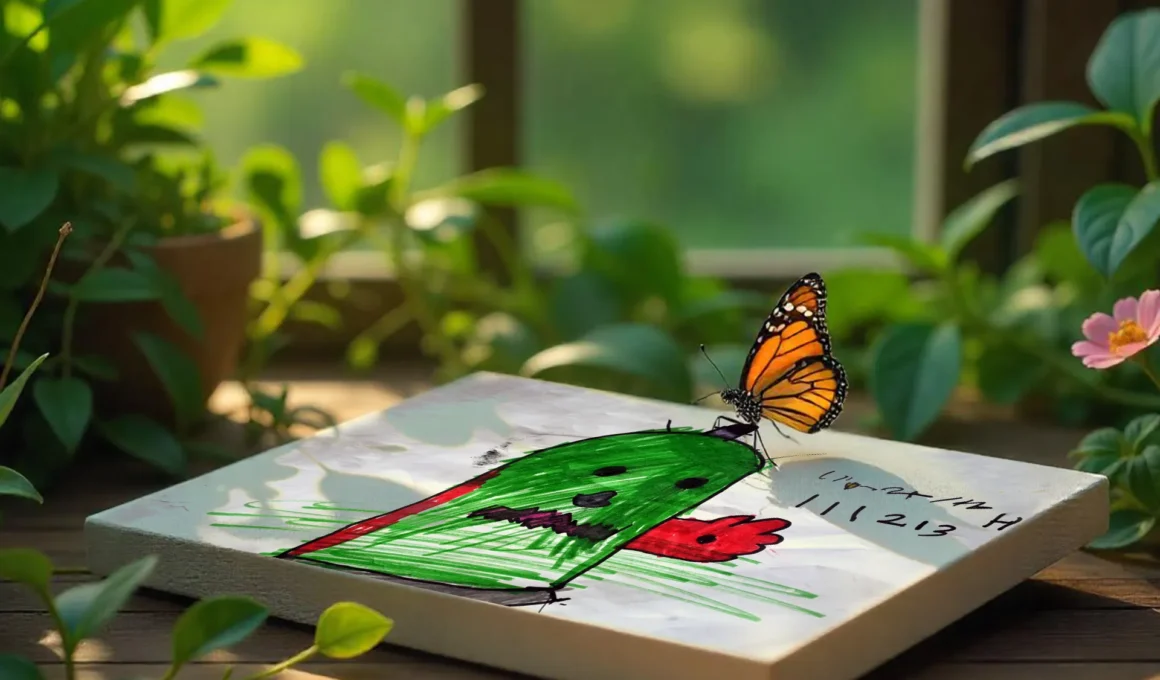The power of imagination in children’s drawings
The fascinating world of children’s art: Children’s art is a profound expression of their imagination, allowing them to channel emotions, thoughts, and unique perspectives into tangible forms. Free from the constraints of reality, their creations reflect a personal interpretation of the world, often using vibrant colors, abstract shapes, and imaginative characters.
Each drawing becomes a window into their inner world, fostering problem-solving, decision-making, and autonomy. Encouraging young artists honors their imaginative spirit, promotes emotional growth, and opens opportunities for dialogue, offering valuable insights into their remarkable perceptions.

Here I am delighted to present works of imaginative and expressive art created by a 5-year-old child. These artworks capture the uninhibited creativity and vibrant perspective unique to young minds.
The Tools of Creative Expression
Children’s art serves as a window into their imaginative world, with the materials they select playing a pivotal role in their creative expression. Various art supplies, including sketch pens, watercolors, and pastels, uniquely contribute to the artistic process and profoundly shape the output of children’s masterpieces. Each medium offers distinct qualities that enable children to explore their creativity and communicate their visions.

The artwork depicts a bus with its seats and a colorful block at the front, which represents a headlight. Surrounding the bus, people are shown walking, adding a sense of movement and interaction to the scene.
Sketch pens are popular among young artists due to their vibrant colors and ease of application. Children can use them for detailed line work or broad strokes, allowing for precision and expression in their drawings. Their quick-drying nature encourages spontaneous creativity, as children can layer colors and enhance their designs without the worry of smudging. This availability of immediate feedback fosters confidence in their artistic abilities, ultimately enhancing their willingness to experiment.

The artwork resembles an animal at first glance, but it is actually a sports car. You can see the spoiler highlighted in pink and a silencer positioned below the spoiler.
The fascinating world of children’s art: Watercolors present a different yet equally enticing opportunity for creative exploration. The fluidity of watercolors allows children to experiment with blending colors and creating gradients, leading to unexpected outcomes. This medium teaches patience, as children learn to control water-to-pigment ratios while encouraging them to embrace the unpredictability inherent to the art-making process. Moreover, watercolor is an excellent medium for exploring textures, enabling children to work with various tools, such as sponges or brushes, to achieve diverse effects.

The artwork above represents a paper rocket that he used to play with. The rectangular section below depicts the part where he holds the rocket to fly it.
Other materials, like clay, charcoal, and collage supplies, also enrich children’s artistic experiences. Clay encourages tactile interaction, while charcoal allows for rich contrasts and expressive strokes. Collage materials inspire children to think outside the box, combining different textures and images to create layered narratives. With the right tools, children are empowered to unleash their creativity, transforming mere ideas into tangible expressions.
Understanding the Meaning Behind the Art

The artwork above depicts a tanker truck, with color patterns representing the road and divider.
Children’s art serves as a unique window into their minds, revealing a rich tapestry of emotions and thoughts through their drawings. The symbols and themes present in their artwork often reflect their inner experiences, allowing parents and educators to gain insights into their emotional states, desires, and fears. One common theme found in children’s drawings is the representation of the family.
Another prevalent theme in children’s art is the use of colors. The selection and intensity of colors can signify various emotions. For example, bright colors may reflect happiness, energy, or excitement, while darker shades may indicate sadness, fear, or anxiety. Understanding these color choices can empower parents to engage in meaningful conversations about a child’s emotional wellbeing. Furthermore, common symbols, such as the sun, clouds, or rainbows, can illustrate a child’s outlook on life and their worldview.

The artwork portrays a goods truck, showcasing curved shapes on the front side along with a side mirror. The rear section, illustrated in black, includes a silencer pipe.
Moreover, children’s artwork often incorporates imaginative elements like fantastical creatures or surreal landscapes. These elements can reveal their deepest dreams, aspirations, or even unresolved fears. By observing the presence and context of these symbols, caregivers can better support children in articulating their thoughts and feelings.
Encouraging Artistic Expression in Children

Fostering artistic expression in children is essential for their overall development and personal growth. One of the primary ways to encourage creativity is to create a supportive environment that nourishes their creative endeavors. Such accessibility promotes spontaneity and invites uninhibited exploration, enabling children to express their feelings and thoughts through their artwork.

This abstract artwork represents a tall building, beginning with a simple stroke and shape that gradually transformed into intricate abstract forms.
Another important aspect of encouraging artistic expression is allowing children the freedom to experiment without the fear of judgment. This approach helps children build confidence in their abilities and fosters a sense of autonomy over their artistic choices.

This is also an abstract artwork, starting with a shape and extending from there.
Asking open-ended questions about their art helps children articulate their thought processes and feelings, further enhancing their communication skills.

This character is inspired by a children’s animation video on YouTube.
Lastly, involving children in community art projects or classes can also enrich their artistic experiences. Exposure to different artistic styles and collaboration with peers fosters inspiration and the sharing of ideas. Thank you for reading.
Check out some of the artwork in the mockups.



Credits: The background images in the mockups above were created using Freepik’s AI generation. Image credits to Freepik.








